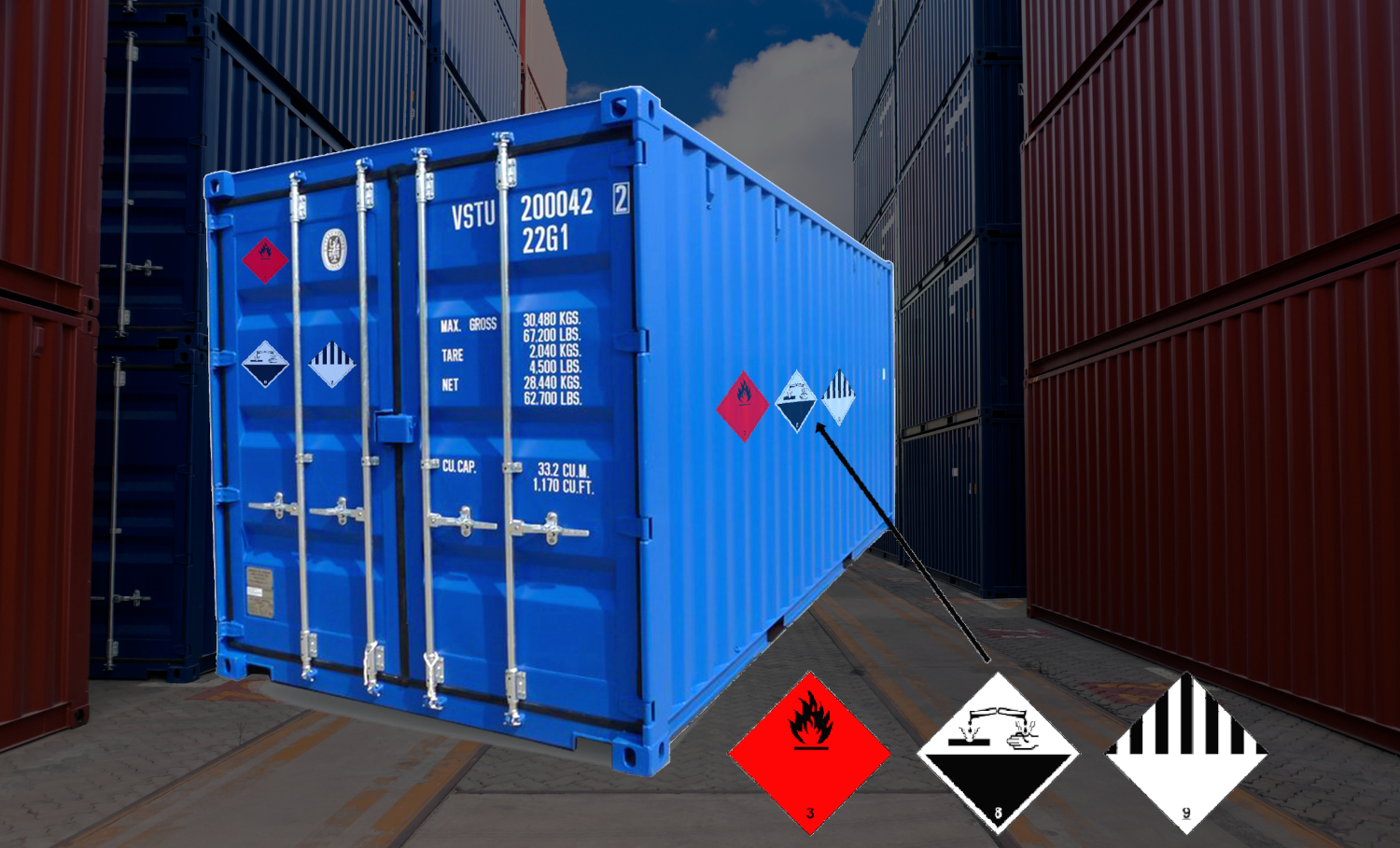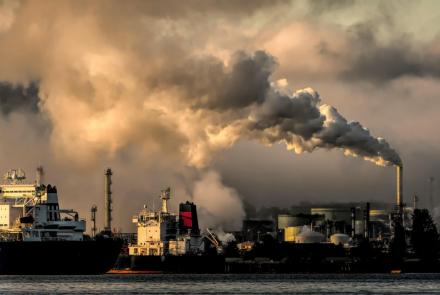Container Selection for Hazardous Cargo: Choosing the Right Container for Your Needs

Selecting the right container for hazardous cargo is critical to ensuring safe, compliant, and efficient transportation. The wrong container choice could result in accidents, costly fines, and reputational damage. At VS&B Containers, we understand the importance of choosing the right container for hazardous cargo, and this blog will guide you through the key considerations and types of containers best suited for different types of dangerous goods.
Why is Container Selection Crucial for Hazardous Cargo?
Shipping hazardous cargo is inherently risky. Whether you’re transporting chemicals, flammable liquids, corrosive substances, or radioactive materials, choosing the wrong container can lead to environmental damage, health hazards, and legal repercussions. The right container minimizes these risks by providing suitable containment, protection against environmental factors, and compliance with international safety standards. Selecting a container specifically designed for hazardous cargo is essential to ensuring the safety of all involved in the shipping process.
Key Factors to Consider When Choosing a Container for Hazardous Cargo
Selecting a container for hazardous cargo requires a thorough assessment of the material being shipped, regulatory requirements, and the unique handling characteristics of different hazardous substances. Here are the main factors to consider:
- Type of Hazardous Material: Different materials have specific requirements. For example, flammable liquids, corrosive materials, and compressed gases each require different container types and safety features. Knowing the exact classification of your cargo is the first step in selecting the right container.
- Transportation Mode: Hazardous cargo containers must meet specific requirements depending on the mode of transport—whether by sea, rail, or road. Each mode of transport has its own set of regulations, so choosing a container that meets these standards is essential.
- Temperature and Climate Requirements: Some hazardous goods are sensitive to temperature changes. For instance, temperature-controlled containers or insulated containers may be needed for chemicals that degrade in high heat or freeze in low temperatures.
- Durability and Strength: The container’s durability and strength are essential to withstand the weight and pressure of hazardous cargo. Reinforced containers and specialized features like double-walled construction can enhance safety, especially when transporting heavy or volatile materials.
- Ventilation Needs: Some hazardous materials release gases or fumes that require proper ventilation to prevent buildup. Containers with built-in ventilation systems are essential in such cases to maintain safe air quality and reduce the risk of explosions.
- Compliance with Regulations: The International Maritime Dangerous Goods (IMDG) Code, the UN Model Regulations, and regional rules like the US 49 CFR must be adhered to for container selection. Non-compliance can lead to fines, delays, or even cargo rejection.
Types of Containers for Hazardous Cargo
When it comes to transporting hazardous cargo, specialized containers are designed to meet specific safety and regulatory requirements. Here are some common types of containers used for hazardous goods:
- ISO Tank Containers:
- Best for: Liquid chemicals, gases, and bulk liquids.
- Features: ISO tank containers are made from stainless steel and are designed for the transport of liquids and gases. They are equipped with safety features like pressure relief valves and insulation, making them ideal for hazardous liquids and chemicals. Their robust design and standardized size also make them easy to load onto ships, rail, and trucks.
- Regulatory Compliance: ISO tanks adhere to the IMDG Code and other international standards, making them widely accepted in intermodal transport.
- Ventilated Containers:
- Best for: Cargo that emits fumes or requires airflow.
- Features: Ventilated containers are equipped with small vents along the side walls to allow airflow, reducing the buildup of hazardous fumes. They are ideal for certain chemicals and materials that need ventilation to prevent pressure buildup or unwanted reactions.
- Regulatory Compliance: They meet various international standards for specific hazardous materials requiring ventilation.
- Dry Van Containers with Modified Interior:
- Best for: Non-liquid hazardous goods, solid chemicals, and industrial equipment.
- Features: Standard dry van containers can be modified to carry solid hazardous materials. Reinforced with lining or secondary containment, these containers can be adapted to reduce contamination risk and protect the container structure from corrosive materials.
- Regulatory Compliance: They meet IMDG Code standards when customized for specific hazardous goods.
- Refrigerated Containers (Reefers):
- Best for: Temperature-sensitive hazardous cargo.
- Features: Reefers provide controlled temperature environments, making them suitable for chemicals and hazardous materials that must remain within a specific temperature range. They are especially useful in intermodal transport as they can be powered by various means to maintain a constant temperature.
- Regulatory Compliance: They adhere to both IMDG and IATA DGR standards when used for temperature-sensitive dangerous goods.
- Open-Top Containers:
- Best for: Oversized hazardous cargo or items with awkward shapes.
- Features: Open-top containers have removable tops, allowing for loading and unloading of bulky or oversized cargo. For hazardous cargo, these containers may be fitted with specialized covers to prevent exposure and maintain safety standards.
- Regulatory Compliance: They are modified to meet hazardous cargo requirements based on the material being transported.
Key Benefits of Choosing the Right Container for Hazardous Cargo
Choosing the right container for hazardous cargo isn’t just about compliance; it also comes with a host of practical benefits:
- Enhanced Safety: Specialized containers reduce the likelihood of spills, leaks, and accidents, safeguarding people, property, and the environment.
- Cost Savings: The right container minimizes damage, contamination, and fines associated with non-compliance, which can result in significant cost savings.
- Operational Efficiency: Containers designed for specific hazardous goods streamline loading, unloading, and transport, improving overall logistics efficiency.
- Reputation Management: Companies that prioritize safety and regulatory compliance protect their reputation, fostering trust with customers and regulators alike.
When to Consider Custom Modifications for Hazardous Cargo Containers
In some cases, the standard hazardous cargo containers might not be enough. Custom modifications can help enhance safety, efficiency, and compliance. Here are scenarios where custom modifications are beneficial:
- Extreme Temperature Control: For hazardous materials highly sensitive to temperature fluctuations, additional insulation or specialized cooling/heating systems may be required.
- Additional Ventilation: Cargo that emits gas or fumes might require enhanced ventilation features beyond standard designs.
- Secondary Containment: For materials with high spill risk, adding liners or secondary containment systems can provide an extra layer of security.
- Enhanced Security Features: High-value hazardous goods may require additional security features like reinforced doors, GPS tracking, and tamper-proof seals.
How VS&B Containers Can Help You Select the Right Container
Choosing the correct container for hazardous cargo is not just about finding the right box—it’s about ensuring safety, compliance, and efficiency across all modes of transport. At VS&B Containers, we have the expertise to guide you through the selection process and provide the best container solution for your hazardous cargo needs. Our team can help assess your cargo requirements, ensure compliance with international regulations, and even customize containers to fit your specific needs.
Ready to find the right container for your hazardous cargo? Contact VS&B Containers today, and let our experts help you make the safest choice for your business!
VS&B Containers group offers both standard and custom-made containers, delivered directly from the factory to your desired location. With a fleet of over 30,000 containers made available across Europe and Asia, the company helps customers get containers effortlessly from anywhere in the world. If you have unique needs in terms of affordability, adaptability, and potential return on investment, please drop an email to traders@vsnb.com, and the VS&B team will contact you to discuss further.
- Log in to post comments






